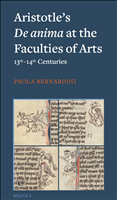Aristotle's De anima at the Faculties of Arts (13th-14th Centuries)
211 p.
This book explores the intersection betweenthe early development of medieval universities and the arrival of Aristotle's works in the Christian West, especially De anima: one of his most famous and obscure writings, straddling the fields of biology and psychology, and devoted to the functions of living beings - including the human being. The leading figures in this very special meeting of cultures, also involving scientific writings from the Islamic world, are the Masters of Faculties of Arts. From the first half of the 13th century, they embarked on a theoretically very demanding enterprise, namely to restore a complete understanding of De anima; and they accomplished this difficult task by establishing a close - and often polemical - relationship with their more famous colleagues: theologians such as Albert the Great and Thomas Aquinas. By resorting to the research and teaching methods of their time, the Masters of Arts addressed crucial topics such as the soul/body relationship, sense perception, intellect
ual knowledge and the special status of the human intellect, mediating, as far as possible, between scientific requirements and those of the Christian faith.Authors such as Adam of Buckfield, Peter of Spain, Siger of Brabant, John of Jandun and John Buridan, together with other, less famous ones and a small crowd of completely anonymous - yet theoretically no less interesting - scholars, gave rise to a choral narrative that disclosed new philosophical perspectives on man. It is in this intellectual context that the roots of Modern philosophical thought lie. [Publisher's text].
Special access authorizations may apply; please contact us for further information.


